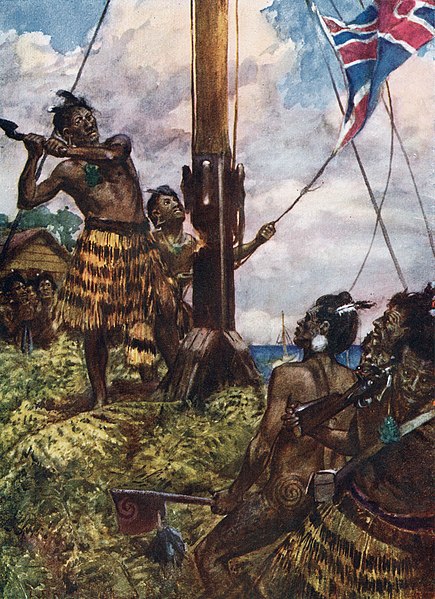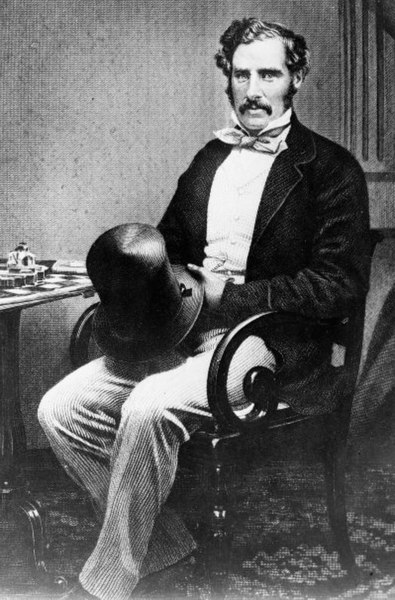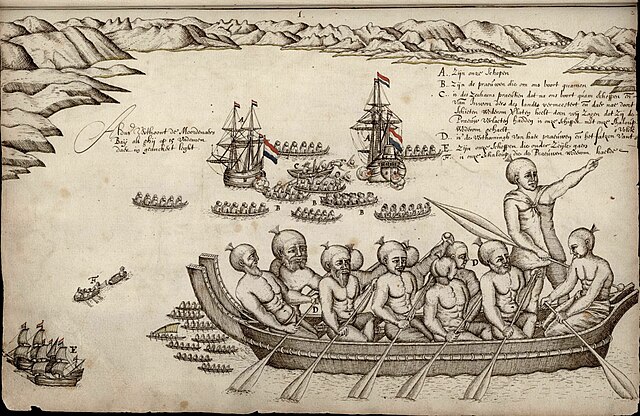The New Zealand Wars took place from 1845 to 1872 between the New Zealand colonial government and allied Māori on one side, and Māori and Māori-allied settlers on the other. They were previously commonly referred to as the Land Wars or the Māori Wars, while Māori language names for the conflicts included Ngā pakanga o Aotearoa and Te riri Pākehā. Historian James Belich popularised the name "New Zealand Wars" in the 1980s, although according to Vincent O'Malley, the term was first used by historian James Cowan in the 1920s.
Memorial in the Auckland War Memorial Museum for all who died in the New Zealand Wars. "Kia mate toa" translates as "fight unto death" or "be strong in death", and is the motto of the Otago and Southland Regiment of the New Zealand Army. The flags are the Union Jack and the flag of the Māori defenders of Gate Pā.
Hone Heke cuts down the flagstaff on Flagstaff Hill at Kororāreka.
Governor (and later Premier) Sir George Grey in the 1860s.
The gunboat Pioneer at Meremere during the Invasion of the Waikato.
Māori are the indigenous Polynesian people of mainland New Zealand. Māori originated with settlers from East Polynesia, who arrived in New Zealand in several waves of canoe voyages between roughly 1320 and 1350. Over several centuries in isolation, these settlers developed their own distinctive culture, whose language, mythology, crafts, and performing arts evolved independently from those of other eastern Polynesian cultures. Some early Māori moved to the Chatham Islands, where their descendants became New Zealand's other indigenous Polynesian ethnic group, the Moriori.
Māori performing a haka (2012)
Early Archaic period objects from the Wairau Bar archaeological site, on display at the Canterbury Museum in Christchurch
Model of a pā (hillfort) built on a headland. Pā proliferated as competition and warfare increased among a growing population.
The first European impression of Māori, at Murderers' Bay in Abel Tasman's travel journal (1642)








